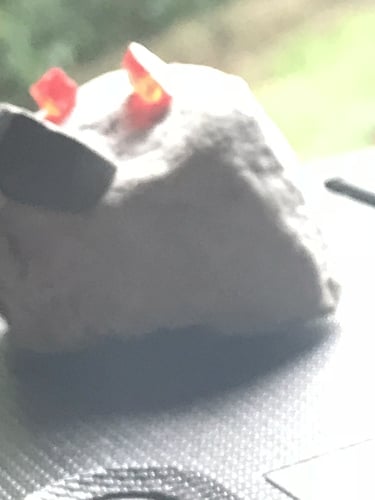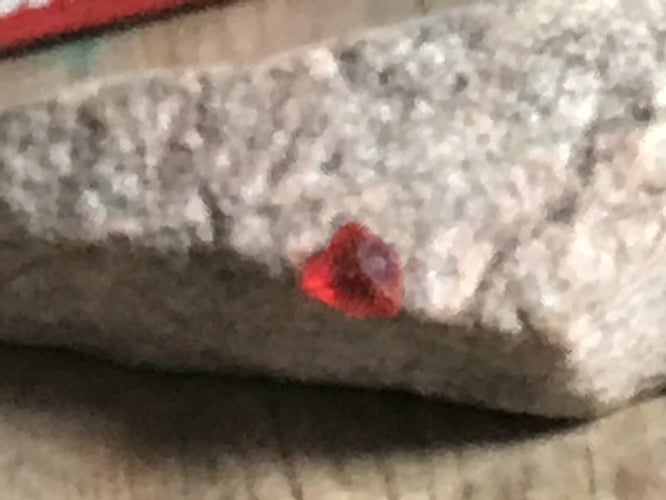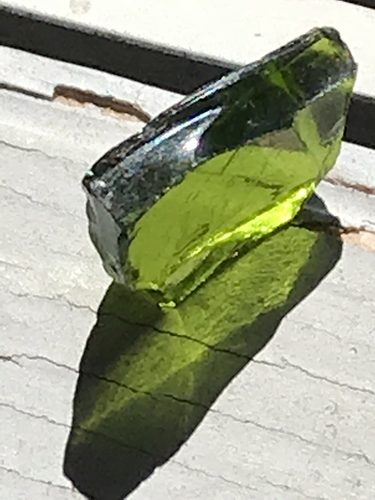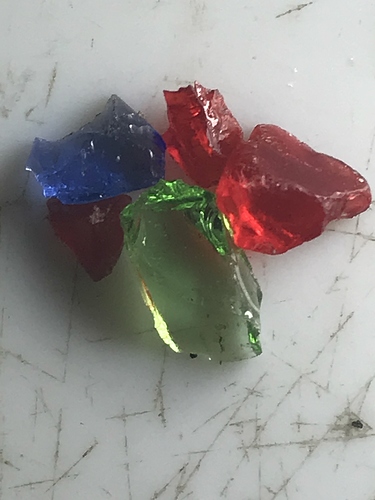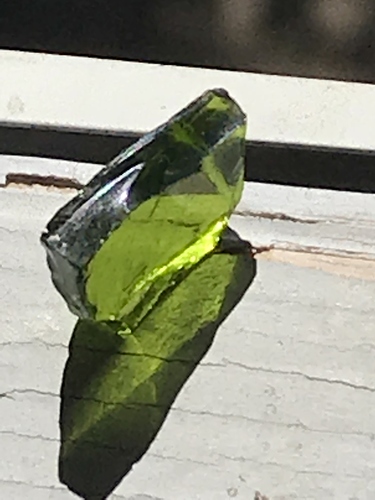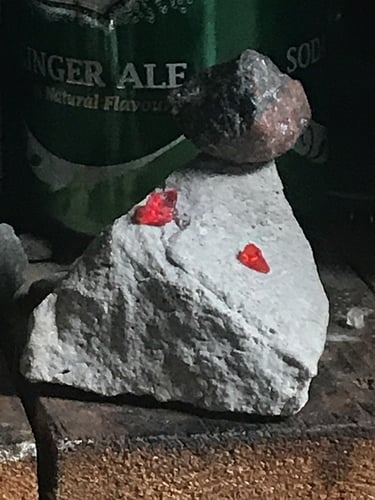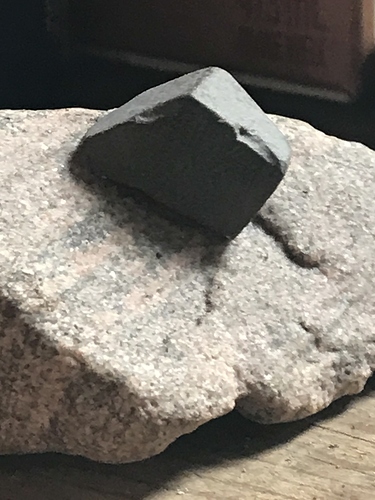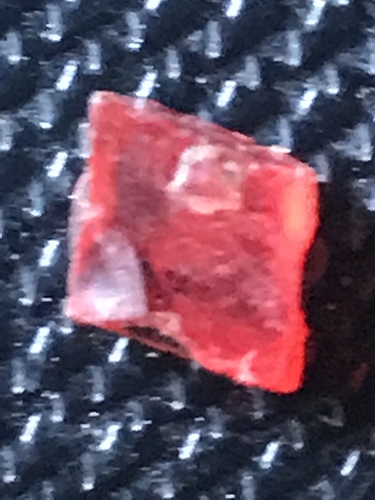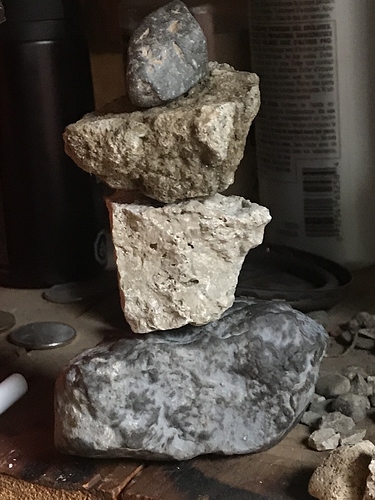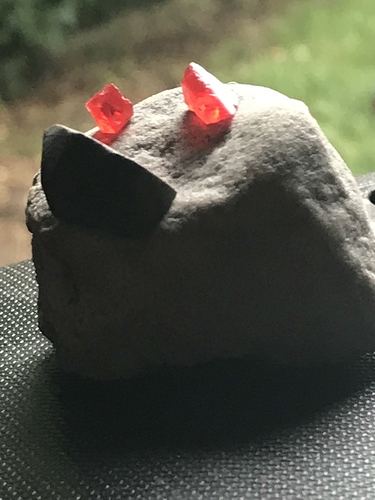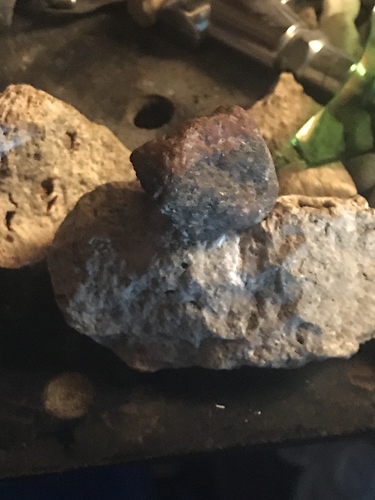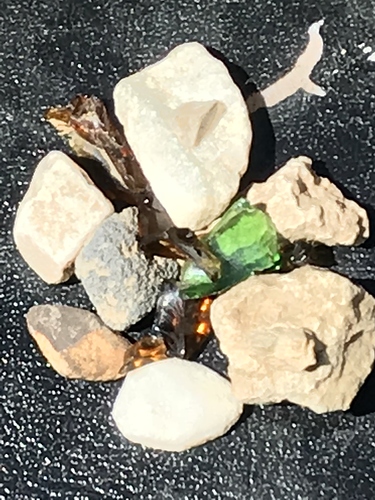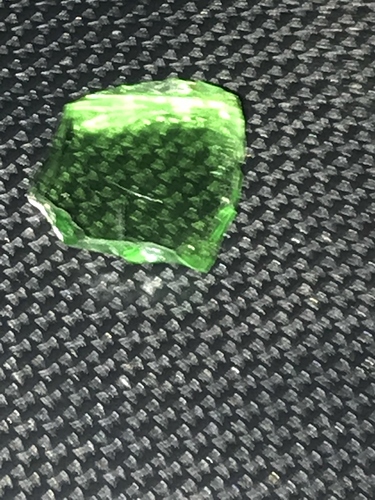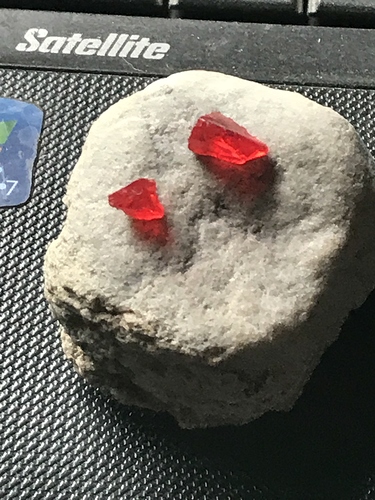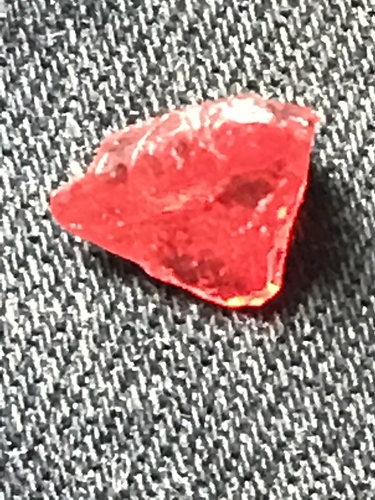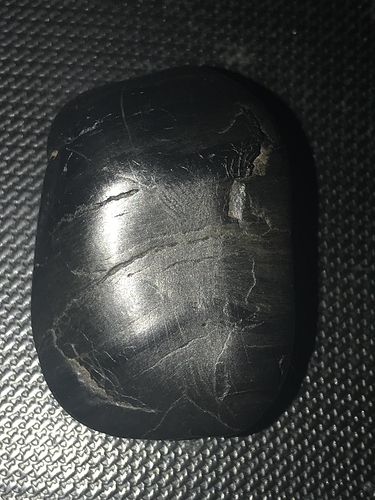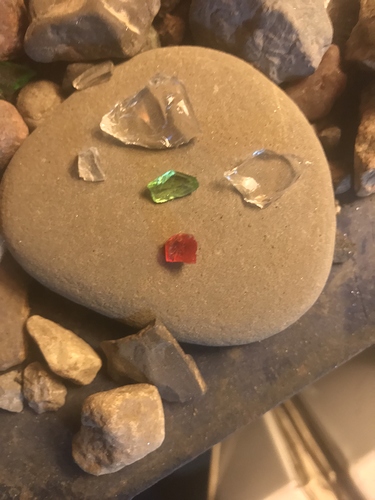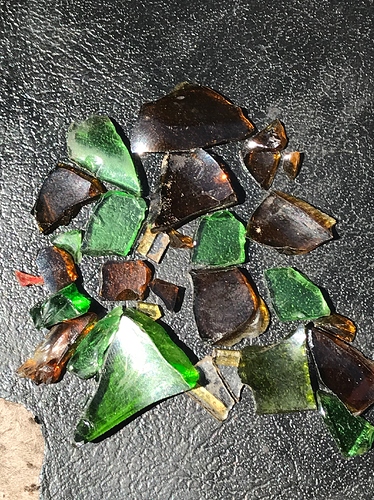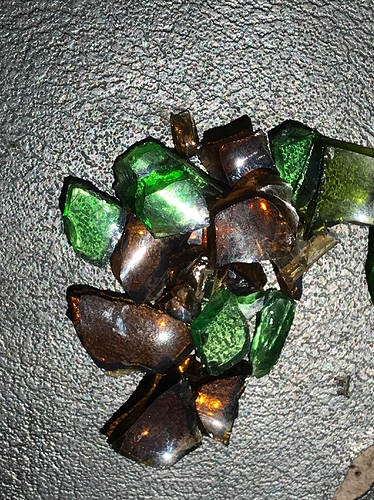What is the quickest test or a short cut to do gem identification test on the fields? Please help.
Visual(shape),Loupe,Dicroscope
A good loupe, Chelsea filter and Dicroscpe. You can identify a lot of stones with just these three items.
Spectroscope is always excellent for identification, with rough and cut material, will not tell you if it is treated or synthetic (but usually a synthetic gem spectrum is too good) but you have a diagnostic ID straight away with a lot of gems sapphire, ruby, garnet, peridot, chrysoberyl, spinels mainly blue and red, pink red tourmaline, glass in some colours, the spectroscope is not easy to use but if you can master it, it is a great help in the field
There isn’t one answer to this question beyond “look at it.” The appearance (color, shape, crystal system, if apparent, inclusions, if seen, cleavage, if present, surface luster and surface appearance, dichroism, for starters) may suggest where to go next. A polariscope is easy to carry and can help determine SR vs DR. A dichroscope is also easy to carry, but any dichroism should be evident by turning the crystal. A great thing to have is a gemology program in which to input any data you have and it will give you possibilities to test for. In the field, a small set of hardness points (maybe just a fingernail, copper penny, knife blade, piece of glass and one of quartz, piece of CZ and/or syn corundum) can be an easy second test. Magnetic susceptibility would be my next easy test…a standard magnet and a styrofoam boat and a glass of water are all that is needed. I would also learn how to determine SG with a small pocket scale and a small salad dressing cup of water, along with some fishing line or a small wire. Going beyond that I would carry a strainless sphere and a quartz wedge substitute for determining optic character and optic sign. SG and optic character and sign, when needed (that is, when other visuals and magnetism don’t suggest a firm ID) should ID most stuff.
All this supposes that you know a fair amount of gemology. Bill Hanneman is fond of saying that the more gemology you know, that fewer instruments you need. Get Hanneman’s book, Affordable Gemology and read it and it will tell you all about determining optic character and optic sign as well as a lot of other stuff and how to use SG as the basis for an ID scheme. It will not tell you how to determine SG with a small scale and salad cup, however. The magnetics stuff is all on line at the gem magnetism site.
A loupe, polariscope, scale and magnet are about all you need in addition to reading the books and having the gemology program on your computer or phone. About $100 or so.
Experience!
I didn’t receive your reply yet just making sure you got your last message. If you need some more information just let me know lots too learn yet.
Steven
I appreciate for reading my massage and taking your time to write me in long details
I use the majority of what you said and agree with them but I think , not possible to do all of those tests you mentioned above at the market or on the field, but I use some to get a good idea what sort of gem I am seeing and what is the quality.
I see you perfectionist so , could you please tell me what is the best way to color grade a cut gem as a reliable source ( close to GIA grading system ) I will not use software or any device as they will not be accurate as what we see on the catalogues or papers. I have not GIA color grading Gemset and I was told Gem Dialogue is the best option and competitive with GIA color grading system.
Ali
I agree with you as they are most easier and less time consuming to use
Thanks
Hi Steven
I have not received any other massage from you
Thanks
Hopefully you will receive the photos I would like for you to have a look at the pictures when you have some time please and thank you
Steven
Well, there are pocket polariscopes and pocket scales and the magnetic tests are do-able in the field, just require finding a bowl of water. In some cases, you might have to inconvenience yourself if the separation is critical and lots of $$$ at stake. I forgot to mention the Hanneman filter sets, which make some separations easily and can be carried in a pocket. I am not familiar enough with all of them to say whether they would make all the relevant separations along with SR vs DR and a loupe. Probably come close. I admit it could be difficult to juggle a strainless sphere and polariscope and quartz wedge substitute and some of the interference figures are a bit hard to find and interpret.
As to color guides, choice is limited. The GemeWizard computer program looks nice, but is dependent on your monitor’s colors, I think. I don’t know if they have a way around monitor variability. Beyond that there is GemDialog and Richard Drucker’s World of Color system that goes with his quarterly subscription to The Guide. The WoC system gives you a set of charts for most gems with a grid that locates saturation and tone in each hue and gives a gem grade for the combination of 1 to 10. You pick the color charts in the WoC booklet of color samples and put your supplied gem crown over the relevant color patch to simulate a gem. I have the WoC system, have had it a short while and it works very well, but you do have to learn to match the colors and it might be good to have some training to do that. There are workshops held in the US for that. The subscription to The Guide is $205 for the on line version and $245 if you want the physical book also (per year), but you must buy the WoC color samples book along with the reference manual and quartz gem crown separately and that is $455 for subscribers.
Professional cutters I spoke with recommended The Guide/World of Color system as the go-to standard in the industry. I have nothing but praise for Richard Drucker and his staff…I had several questions about how the system works on line and in the booklet and spoke with three different people, including Mr. Drucker himself and all were extremely knowledgeable and helpful. These folks know there stuff and they are accessible. It is a lot to spend, but if you are color grading high end stones, it is useful and could save you being off by $1000 on one stone easily enough. Your appraisal value is your starting price in the industry among high end jewelers.
The GemDialog System is also a good one and has charts which will help you convert the GemDialog grade to a GIA grade or a WoC grade. The advantage of the Drucker system is that you do have access to a team of experts and it is a self-contained system that goes from the color grade to cut and finish, color zoning, transparency, etc. and then to an actual wholesale value. The only alternatives are sets of reference stones or a search of the Internet to establish values, but both of those have their problems.
Hope this helps.
royjohn
I have seen the Gem Dialogue before but this is the first time I see the World of color system and both looks interesting. The Gem Dialogue , I was told by a designer in US is recommended as it is competitive even the GIA admit that. I think , this is the one I should have.
Thank you
Aside from the old ColorScan system (Cap Beesely) which is now out of production, World of Color and GemDialogue are the only two color grading systems in current production. There are a few differences between them…GemDialogue considers brown as a masking color and provides color masks to put over the main color samples whereas World of Color considers brown a color and provides color samples which include brown tones on each color sample page…either system is workable and will give you a color grade which can be used as is or converted to a GIA color grade. The price of each is about equal. One issue that swayed me to World of Color was the need for a system which took into account cut grade, transparency, color zoning, inclusions, etc. to produce an actual grade for the stone considering all factors AND THEN use that grade to produce a appraisal value for the stone. GemDialogue will give you a color grade, but then you will have to translate that grade into another system to use GemVal, GemeWizard or The Gemworld Guide to get a price reference, which I think would be your ultimate goal. With WoC you are using the color grading system that plugs into the price grading book without having to convert. In addition, if you subscribe to the quarterly price guides, you can get technical assistance from the Drucker group at any time and this could be very helpful.
As far as getting a color grade, either system will work fine, it’s just a question of what you do with that grade once you get it. You could also use GemeWizard and match colors on your monitor, but you’d be tied into a monthly subscription forever. If you use WoC (or GemDialogue), the color reference is yours and never goes out of date…you can use an outdated Gemworld Guide if you don’t continue your subscription and it will probably be fairly accurate into the next year or so…
HTH, royjohn
Thank you for this post I have been looking for a color system and World of color is based on the Munsell system a system I used in collage . The gem “crown” looks like a good idea is as good as it looks ?
Yes, it is based on Munsell, almost exactly the same…I think they reversed the tone scale so that light and dark are on opposite ends from Munsell and they may have changed a few color names…I think those are the only differences. The gem crown is made of quartz and it does seem to give a realistic look with patches of lighter and darker hues such as you’d see in a gem. Not perfect, but it’s a pretty good alternative to carrying around a bunch of reference stones and gives you a whole lot more color comparisons. As I said earlier, I was most pleased that I was able to talk with the staff and even Mr. Drucker himself about a few questions I had and they were most professional and knowledgeable. You’re in for $700 for the first year if you want the whole system with prices, etc., but this is warranted and extremely useful if you are going to be trading in cut stones, or even rough, I find that I can often get some light return off a back face of a rough crystal that will tell me the approximate color I’ll have when cut and then I can figure my yield and actually know about what the cut stone will bring. Not for the amateur, but it can save your bacon as a professional. The only current competitor is the GemeWizard, if making the comparisons on the monitor appeals to you. the professional cutters I talked with, admittedly a small group, all use The Guide in their sales to jewelers. I’m not affiliated with Drucker in any way, just a satisfied customer.
HTH, royjohn
Hi I agree with Royjohn, I use the Gemworld appraisal system and the world of colour booklet. I know for a fact that all accredited valuers in Australia are being taught how to use this system and advised this is the way to go for all professional valuations.
Thank you for your confirmation
I will shop to use gemstone color grading.
Regards
May I know what program are you referring by the gemology program on computer and phone.
Thanks
